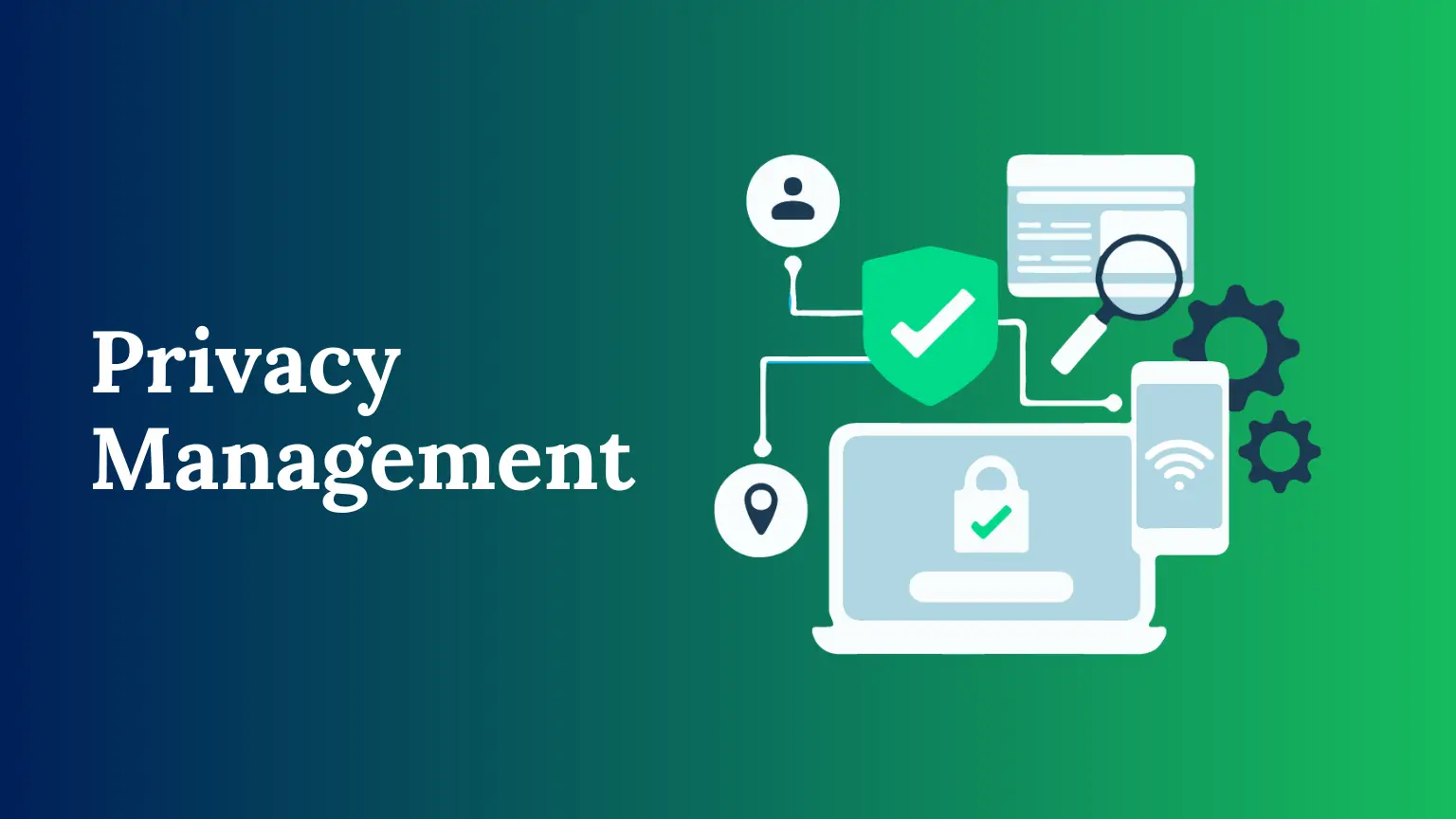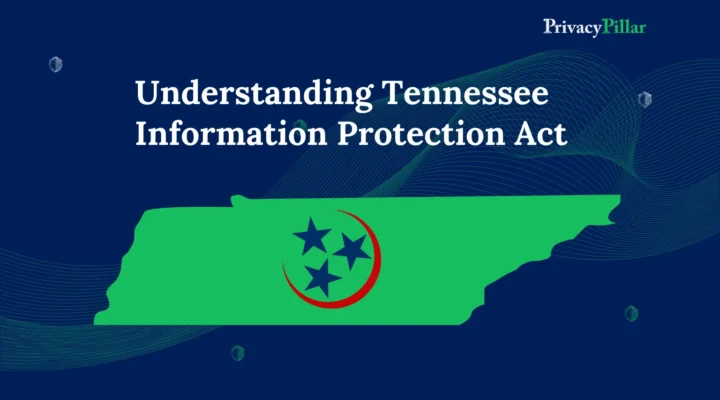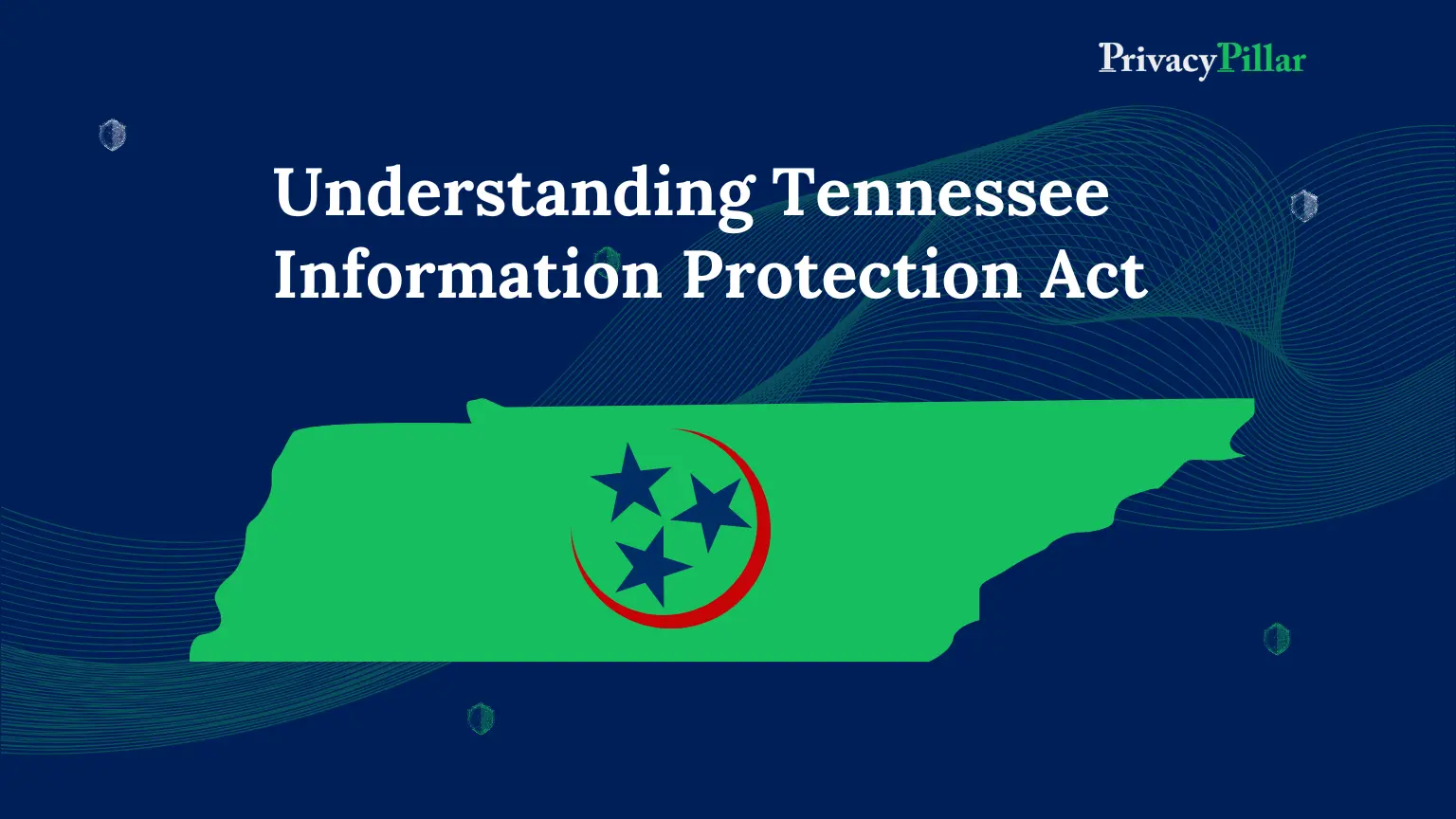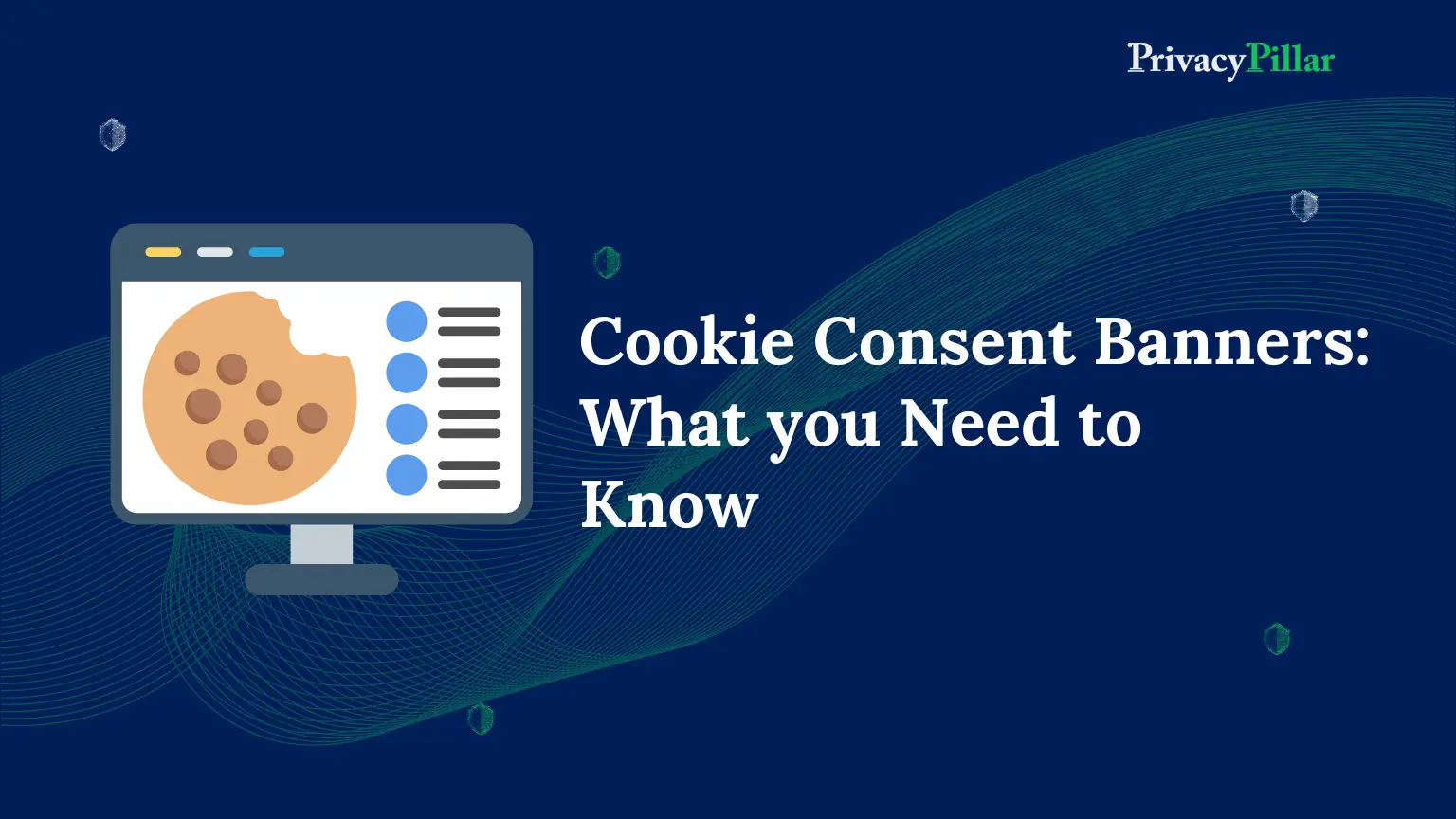
What is Privacy Management
Organizations worldwide are starting to feel the immense responsibility of managing the proliferation of data flowing from numerous endpoints and protecting that data from accidental leaks and online threats.
Due to the numerous data privacy rules and rising consumer awareness, businesses can no longer afford to acquire consumer data freely.
Poor data privacy policies make you a target for criminals and risk damaging your organization’s hard-won reputation with customers.
Threat vectors tend to grow in proportion to data migration from physical, on-premises infrastructures to virtual data centers and leaks.
In addition, company policies for data privacy and protection raise even more concerns among internet users.
Similarly, 47% of individuals worry about their data being hacked, while 51% are concerned about their data being sold without their consent to third parties for the personal profits of businesses.
Governments all over the world have responded by enacting strict data privacy laws and standards, such as the European Union’s General Data Protection Regulation (GDPR), the California Privacy Rights Act (CPRA), and the United States Health Insurance Portability and Accountability Act (HIPAA) for the protection of health data, to mitigate internet users’ privacy concerns and fend off digital threats.
Non-compliance with these privacy laws can also result in a seven- or eight-figure fine.
This is where data privacy management comes into the picture and acts as one of the privacy compliance solutions to help your business adhere to all the privacy laws and bring in the best data management practices into your business.
It is your responsibility as a business to develop and deploy a robust data privacy management system to mitigate consumers’ worries, keep their trust, and assure compliance with many data privacy laws enacted by the government.
What is Data Privacy Management?
Data privacy management includes:
- Asking for permission before collecting customer data.
- Protecting the personal data of consumers.
- Addressing safety breaches.
- Keeping track of where consumer data is stored.
- Recognizing the destination to where it is being transferred.
- Whether it is receiving compliant treatment.
- And a lot more.
According to Gartner, privacy management refers to a framework or a technology that helps businesses evaluate their data processing operations and ensure they comply with privacy laws.
(Source- https://www.gartner.com/en/information-technology/glossary/privacy-management-tools)
It is a systematic way of fusing several disciplines into frameworks and policies that enables enterprises to adhere to legal requirements, safeguard people’s rights, and satisfy the needs of their customers or business partners.
Organizations must conduct timely data privacy impact assessments, respect individual privacy rights, and analyze and record the flow of corporate data, including both sensitive and personal data, such as the purpose of processing and retention policy, to facilitate data privacy management within an organization.
Additionally, a privacy management solution must assist firms in keeping track of, responding to, and reporting data breach instances promptly and accurately and maintaining written privacy policies and consumer notices.
Since it is reasonable to assume that workers who request or manage customer data are included, privacy management encompasses numerous departments and diverse teams to the bottom of the business hierarchy.
Chief data officers, chief privacy officers, compliance officers, privacy analysts, and security analysts are a few possible participants in a privacy management program.
Traditional privacy management tools based on manual procedures may result in miscommunications between departments, increased human error when handling data privacy concerns, and a greater likelihood of regulatory violations because multiple teams and departments are involved in addition to the data itself and the growing number of data ingestion points.
Here, the only practical approach for ensuring uniform application of data privacy policies throughout the organization and ultimately achieving compliance with applicable privacy regulations is modern, automated privacy management.
What is a Privacy Management Framework?
A complete information privacy program that meets privacy duties and risks while supporting current and future business opportunities can be established and operated using the Privacy Management Framework (PMF).
The Generally Accepted Privacy Principles (GAPP) from 2009 were replaced with the PMF.
The General Data Protection Regulation (GDPR) and updates to the AICPA’s Trust Services Criteria (TSC) are just two examples of how significant changes in technology and information and data privacy laws and standards have resulted in the PMF being updated by the AICPA Privacy Task Force in 2020.
The AICPA Privacy Task Force and the AICPA Information Management and Technology Assurance Executive Committee have approved this amended PMF.
It is optional to adopt the PMF.
The PMF is a manual that businesses can use to manage business operations involving collecting, creating, using, storing, and transmitting personal information about individuals.
Components of Privacy Management Framework
PMF consists of nine components:
- Management
- Agreement, notice, and communication
- Collection and Creation
- Use, retention, and disposal
- Access
- Disclosure to third parties
- Security for privacy
- Data integrity and quality
- Monitoring and Enforcement
Need to establish a Data privacy management framework.
Due to the enormous proliferation of data, organizations need help keeping track of business, susceptible, and personal data.
Organizations need the necessary data insight to determine which data type is subject to which regulatory requirement.
The consequences of not having those regulatory compliance incidents can be very considerable without a well-established privacy law solution.
- Prevent Financial Loss
The biggest worry about ineffective and inefficient data privacy management is financial or legal damage.
Businesses that often deviate from ethical data privacy standards or have insufficient security measures are subject to strict rules, including heavy fines and penalties.
Additionally, regulatory bodies worldwide are highly watchful and strict when identifying and punishing businesses discovered to be breaking privacy laws.
Consider the combined $72 million fine that South Korean watchdogs imposed on Google and Meta for tracking and using consumer data for targeted advertising without their consent.
- Protect Your Company Reputation
Since it is simpler to regain the money than to restore a company’s reputation, followed by customer trust, reputational damage is a more significant concern for businesses than financial loss.
Consumers’ worries about data leaks and subsequent abuse of their data grow due to data breaches.
When consumers learn from the company about its effective response to such incidents, their understandable fear is reduced.
Companies eventually face regulatory fines and a loss of customer trust when they fail to promptly notify authorities and the parties affected of the breach and the repair measures taken.
As a result, customers start to leave the company or switch to other service providers, which harms the company’s reputation.
A company’s loss of market reputation substantially impacts potential investment opportunities.
- Protect consumer data.
According to a well-known proverb in the security field, you can’t protect what you don’t know.
The ability to track data as it expands presents new challenges, mainly when it includes unstructured data, which accounts for 80% of all data globally.
Companies can gain valuable insights into data, including metadata, which includes sensitive data tags, sources that contain sensitive or personal data, retention policies, and current security barriers around that data, thanks to privacy management solutions.
Businesses may use these insights to implement the best data protection practices and prevent security breaches.
- Reduce oversight and mistakes.
When it comes to regulatory regulations, several essential components work together.
Teams must manage an accurate data inventory, provide adequate access controls, create privacy notices, make prompt breach notifications, do impact analyses, evaluate vendor risk, and ensure correct compliance and seamless departmental communication.
Leaving all of these tasks to conventional, manually run systems of practices can lead to ongoing oversight and human mistakes.
A practical, automated data privacy management software can eliminate mistakes and oversight while expediting privacy-enabled business procedures across departments.
Top 3 challenges in data privacy management
Working on data privacy risk management can take time and effort. Here are some of the biggest obstacles you might encounter.
- The challenge of integrating data privacy management tools
Privacy is still viewed as an afterthought by many businesses. The best approach to avoid non-compliance, data breaches, and hefty fines is to do that.
Data security and privacy should be among your top considerations. To ensure that your staff members are familiar with best practices, incorporate them into your business strategy and teach them at onboarding and ongoing training.
- Insufficient resources and complex regulations
Laws governing data privacy are complex and ever evolving.
You must be more aware of and knowledgeable about your company’s relevant laws.
The most crucial stage is identifying the tools and resources to help you remain on top of all the data privacy obligations.
Unfortunately, a majority of SMBs lack the resources necessary to do that.
You can manage the process even with minimal resources if you choose an intelligent approach and integrate it into the foundation of the company from the beginning.
- An increasing amount of Data
Before there were laws protecting data privacy, tech firms lived by the maxim “Data is the new oil.”
Valuing consumer privacy was not a top priority; instead, the focus was primarily on collecting and keeping as much data as feasible for an extended period.
The enormous volumes of data that businesses like Facebook, Netflix, and others collected allowed them to be valued at billions of dollars.
Many organizations continue to believe that more data is better despite the expansion of data privacy legislation.
Much of the technology that powers the internet and companies’ services daily is built to collect as much data as possible.
The outcome? Data overload seriously threatens the privacy and security that many companies face, especially small businesses.
You need to know precisely to whom the data belongs, why you obtained it, how you’re processing it, and for how long it will take you to be compliant unless the data is anonymized.
Even when using best practices for data privacy management, this becomes more difficult to achieve the more data you have.
The first step to compliance is to carry out a data inventory, also known as a record of processing activities (RoPA), even if your business is overflowing with data.
Your RoPA might not get into the specifics of your processing activities if you have an unmanageable amount of client data, but you must begin somewhere.
Applicable Privacy laws and regulations
Over the past few years, the data privacy landscape has changed drastically, mainly because more than 120 nations have data privacy and protection laws in place.
Reasonably, those specific sets of regulations-covered provisions are the core pillars of today’s data privacy management.
One of the main objectives of data privacy management is regulatory compliance.
The following data privacy principles, included in most data privacy regulations worldwide, must be fulfilled by an organization’s ideal data privacy management framework.
Principles for Data Protection & Processing
Any privacy management framework must have fundamental principles to unify, bring transparency, lend credibility, and guarantee that the organization’s data processing operations adhere to global privacy rules.
According to the GDPR and the majority of global data privacy laws, some of these principles include:
- Lawfulness, fairness, and transparency
According to the first rule, businesses must ensure that their data collection and processing operations are “lawful, fair, and transparent.”
Organizations must have a reason for processing personal data to assure lawfulness.
There must be a justification or legal basis related to their business activity that supports their data collection and usage; just because they can acquire someone’s personal information does not indicate that they should.
For an organization to be fair and transparent, it must be easy for users to access and understand its privacy policies, including all relevant information about data collection, processing, data controllers, third parties, and data subjects’ rights.
- Limitations on Purpose
Organizations can only collect and process data for legal, definite, or explicit purposes.
- Data Minimization
Data minimization is essential to achieving the processing goals for which it was obtained. Data must be limited, relevant, and sufficient.
- Accuracy
According to the accuracy principle, organizations must verify that the data is accurate and comprehensive, and if they find that it isn’t, they must either remove it or fix it.
- Limitations on Storage
Data may only be kept or held for as long as necessary to meet its obtained purposes and may not be saved after those purposes have been satisfied.
- Integrity and confidentiality
Organizations should set data protection procedures to stop data breaches and unauthorized access.
Legal Basis for Processing
One of the most crucial components of privacy management is the legal basis, which establishes a reasonable reason for data processing.
Most privacy regulations require enterprises to provide one of the following explanations to ensure a legal basis for data processing:
- Consent
If a user has explicit permission for processing, you may process their data for various data processing activities.
Consent must be freely provided, explicit, informed, and clear to justify data processing legally.
As per the relevant privacy regulations, make sure your privacy management framework includes all crucial consent-related provisions, such as exceptions to consent, the right to withdraw consent, and the ways to get it.
- Contract performance
You may process their data to uphold a contract or agreement between a company and a user.
- Legal Requirements
Complying with legal obligations is another legal foundation for data processing.
This allows you to use user data to comply with applicable legal mandates.
For instance, you are obligated by the applicable employment law to give the local tax authorities information regarding your employees’ salary.
- Vital interests
Organizations may handle a user’s data to safeguard that user’s vital interests or the interests of another natural person.
For example, an organization may process a user’s health information to save that user’s life in an emergency.
- Public interests
This legal basis typically applies to public agencies that must process data to carry out a duty under the authority of a public official.
- Genuine interests
You may also handle personal data to further your interests as long as those interests are fair, and the processing is carried out in a way that is least intrusive while still protecting the rights and freedoms of the data subjects.
Privacy Assessments
Data Processing Impact Assessments (DPIAs) and Privacy Impact Assessments (PIAs) are crucial for businesses if they create a new product or carry out a data processing operation that poses a high risk to individuals.
Companies may use privacy assessments to assess their data privacy policies and procedures to prevent exposing users to unnecessary security or privacy concerns.
It helps an organization’s compliance efforts and lowers the risks of future data breaches.
A privacy management program must first have a complete record of its data-collecting activities to identify specific individuals’ risk exposures and resolve and mitigate those risks.
Cross-Border Data Transfer & Localization
The privacy management program should keep track of any data transfers of users’ information, whether total or partial, outside the country and ensure that they occur only when all necessary legal and regulatory criteria have been met.
For instance, the GDPR only authorizes cross-border data transfers to nations where a sufficient degree of protection is guaranteed or where measures have been taken to ensure that the level of security is fundamentally similar to that which is now guaranteed inside the EU.
Some laws also compel organizations to send privacy notices informing individuals of the transfer’s specifics.
Similarly, some privacy laws mandate that you maintain a local copy of the data.
Response to a Data Breach Incident
If not dealt with quickly and effectively, data breaches may be a turning point for a business for the worse.
It may lead to significant regulatory penalties that negatively impact a company’s brand and cause customers to lose faith.
Organizations must have a breach impact assessment and response system in their regular assessment activities.
Thanks to the data breach assessment, employees could stay informed about the risks resulting from data breaches and their involvement in preventing them.
Teams can identify, fix, and report breaches with the help of a well-established breach impact analysis and response system and foresee possible threats.
Teams can generate the most learning from breaches, identify reoccurring patterns, identify vulnerabilities, and plan appropriate preventive measures.
Vendor risk assessment
The capacity of data privacy laws to regulate a company’s privacy practices from all angles is one of the features that helped it become popular across the globe in such a short period.
Vendor risk assessments are a part of this.
Businesses must only share data with third parties, as permitted by privacy rules like the GDPR, provided they can ensure that those parties will take the necessary technological and organizational steps to protect the privacy and security of the data.
Security teams can examine a vendor’s security and privacy approaches and safeguards through a routine vendor risk assessment.
With this, Teams can fix weaknesses in security measures after finding them.
Conclusion: Manage your data’s privacy with PrivacyPillar
Privacy management is a difficult task that one person cannot complete alone.
Almost every team at a particular organization interacts with data privacy at some time, including the legal team, the tech team, human resources, and development.
To reduce your risk, teams must work together and engage in proactive education about data privacy.
You won’t be able to participate in this crucial task of collaboration and education if you have to monitor data privacy manually.
Software for managing data privacy risks relieves you of some of that burden.
Choosing the best option for your company can be difficult when you have many options.
This is where PrivacyPillar steps in to help you with various solutions for your company’s data privacy management.
PrivacyPillar automates compliance solutions for global privacy regulations, ensuring seamless data privacy and mitigates compliance risk safeguarding your business reputation.
It features data discovery, next-gen consent management, and streamlined global compliance solutions.
PrivacyPillar simplifies complex consent processes and provides clarity through metadata-driven data catalog.
Adopting PrivacyPillar improves data privacy management, increases efficiency, and reduces risks.
Partner with PrivacyPillar, and make privacy your competitive advantage by embracing the power of permission marketing that builds trust with your consumers.
FAQs
1. What is data privacy management?
Data privacy management involves implementing policies and practices to protect sensitive information, asking for permission before collecting customer data, addressing safety breaches, and ensuring compliance with privacy laws.
2. What is the importance of data privacy in businesses?
Data privacy is crucial for businesses to protect customer trust, avoid financial losses, and maintain a positive reputation. It involves safeguarding personal information, complying with privacy laws, and preventing security breaches.
3. What is a Privacy Management Framework (PMF)?
A Privacy Management Framework is a comprehensive program that helps businesses manage the collection, creation, use, and storage of personal information. It consists of components such as management, security, data integrity, and monitoring to ensure legal compliance.
4. What are the principles of data protection and processing in privacy management?
Privacy management principles include lawfulness, fairness, and transparency; limitations on purpose; data minimization; accuracy; limitations on storage; integrity and confidentiality. These principles guide organizations in processing data responsibly.
5. What are the challenges in data privacy management?
Challenges in data privacy management include integrating tools, dealing with complex regulations, managing the increasing volume of data, and allocating sufficient resources. Overcoming these challenges is essential for effective privacy management.
6. What is the impact of data breaches on businesses?
Data breaches can lead to financial and reputational damage for businesses. Immediate and effective response systems, breach impact assessments, and preventive measures are crucial to minimize the negative consequences.
7. What is the role of Privacy Impact Assessments (PIAs) in data privacy?
PIAs are essential for assessing data privacy risks and ensuring compliance, especially when introducing new products or high-risk data processing operations. They help organizations identify and mitigate potential privacy concerns.
8. What is the significance of cross-border data transfer in privacy management?
Cross-border data transfer involves tracking and ensuring legal compliance when transferring user information internationally. Adhering to regulations, such as GDPR, is crucial to safeguard data and maintain user privacy.
9. What are the legal bases for data processing in privacy management?
Legal bases for data processing include consent, contract performance, legal requirements, vital interests, public interests, and genuine interests. These bases provide organizations with lawful reasons for processing personal data.
10. What is the role of automated privacy management solutions in businesses?
Automated privacy management solutions, such as PrivacyPillar, streamline compliance with global privacy regulations. They offer data discovery, consent management, and global compliance solutions, enhancing efficiency and reducing risks in data privacy management.



